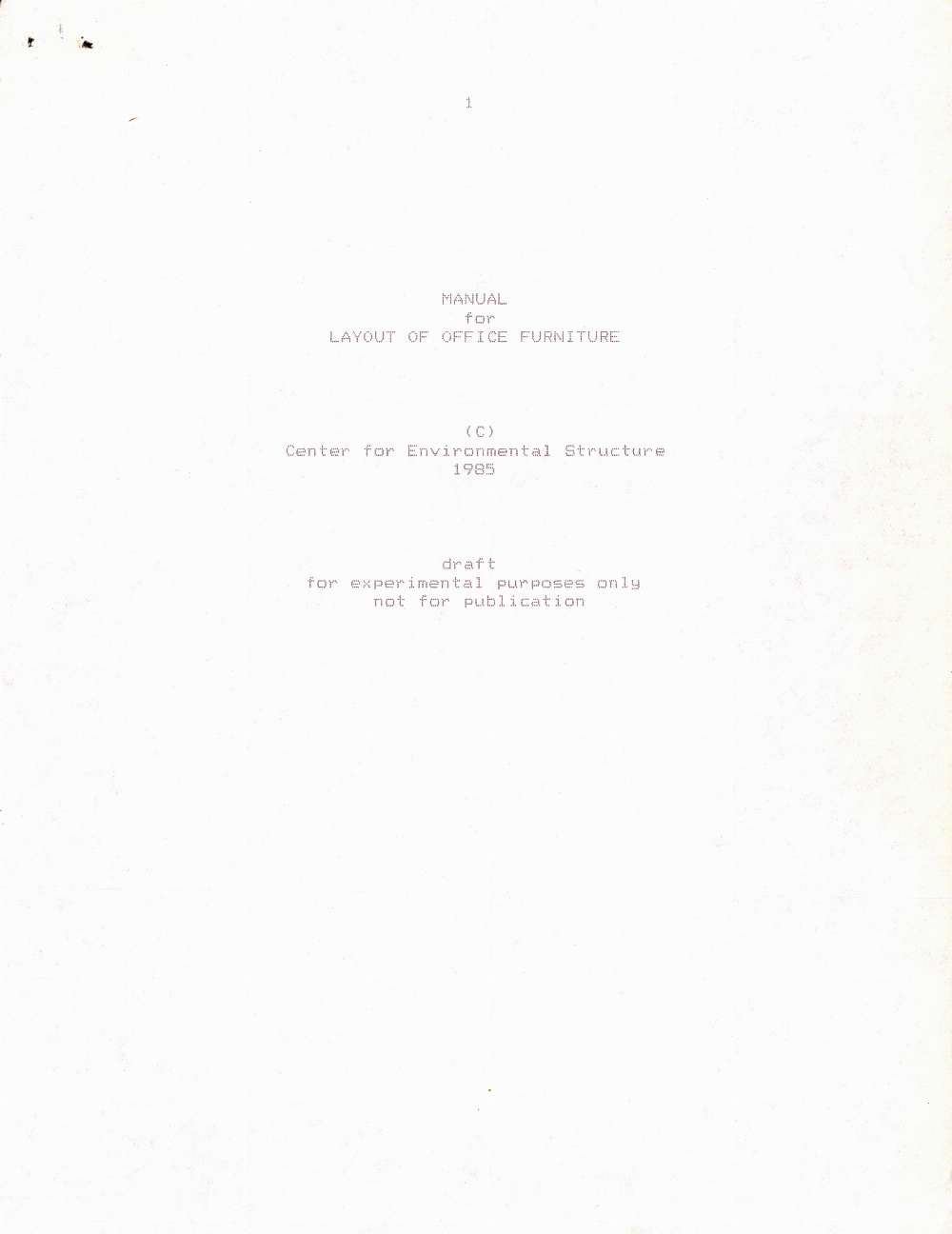
Haworth New Office Furniture System: Manual for Layout of Office Furniture
01/01/198534-page manual addressing the workers and managers in an office, with instructions that allow them to create a new, and better environment for themselves. The document contains nine layout steps describing the process to be followed. In addition a 60-page earlier version of the layout manual is included which is organized in six steps.
References
-
The Sequence of Unfolding - Generative Codes for the Design Process
In architecture, as in other things, the "right" sequence is of vital importance. It is a generative sequence of progressive differentiations, which allow space to unfold in the right order. Each differentiation acts on the product of the previous ...
-
Participation of the Users in the Design Process - Testing and Applying Pattern Languages and Layout Rules
Christopher Alexander believed that people have a right to determine and shape their environment. The genuine and wholehearted involvement of the users in the shaping of their buildings contributes positively to good architecture. It gives life, identity and personal qualities ...
-
Haworth New Office Furniture System: Pattern Language for a New Generation of Office Furniture
01/05/1985
34-page in-house sketch of a Pattern Language with 64 patterns structured in two groups: Group One “The Character and Layout of Offices” and Group Two “Physical Shape and Substance of the Furniture”. There is also a copy with some handwritten ...
-
Haworth New Office Furniture System: Basic Sketch of Theory and Physical Characteristics of the Office Furniture
01/09/1985
41-page early report addressing the following six topics: 1) Fifty Key Elements; 2) Customer Variables and Builder Variables; 3) Price of Variables; 4) Manufacturing of Elements; 5) Speed of Production; 6) Franchised Local Production Shops; 7) Cuttable Modifiable Materials.
-
The Personal Workplace: A New System of Office Furniture for the 21st Century
01/01/1986
324-page document that describes the theory and practice of a new kind of workplace. It is organized in two main parts, as follows: Introduction; Part One: Practice – 1. Examples of the new workplace in practice; 2. Available parts and ...




 Go Back
Go Back